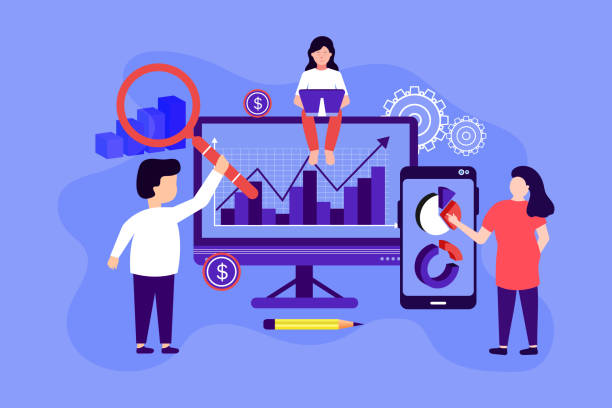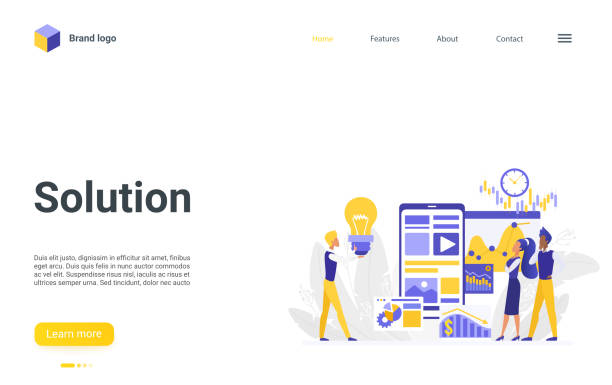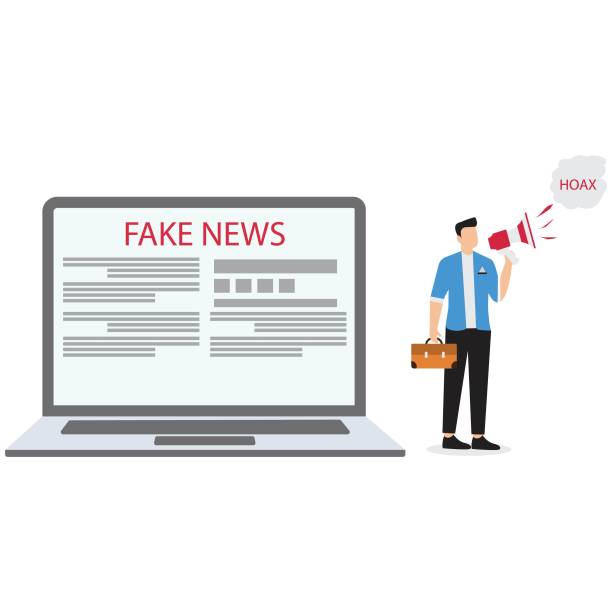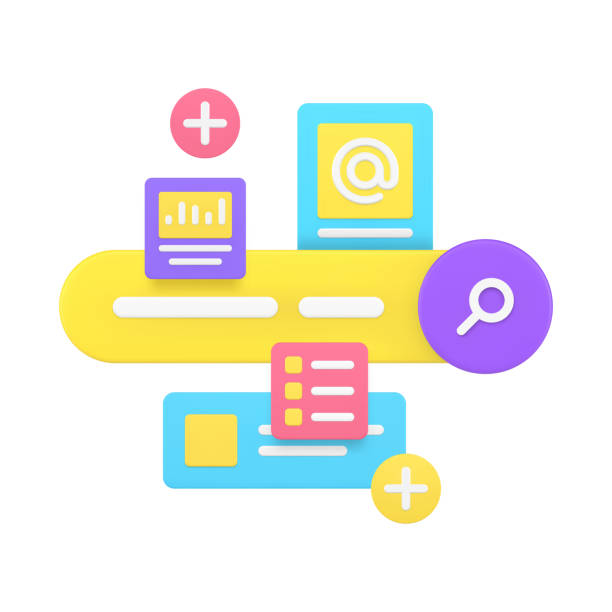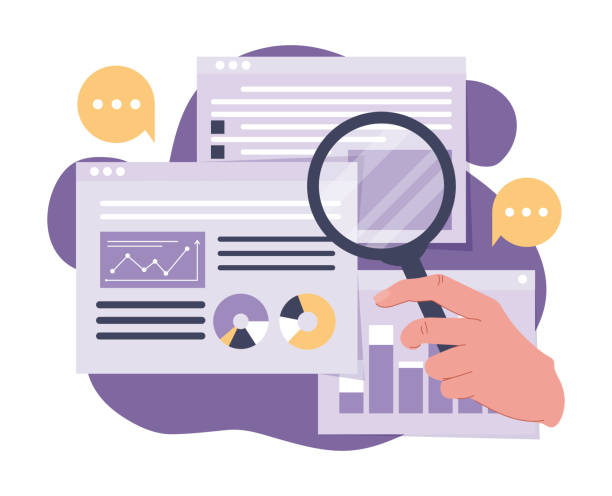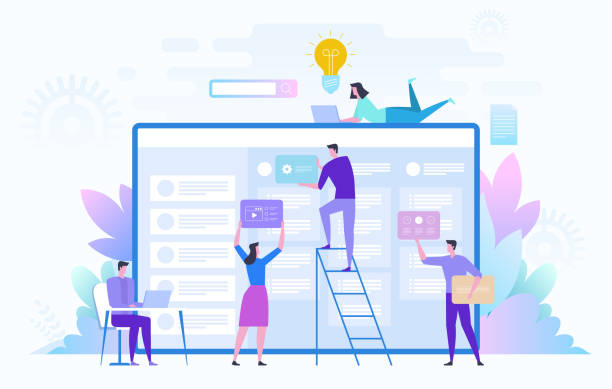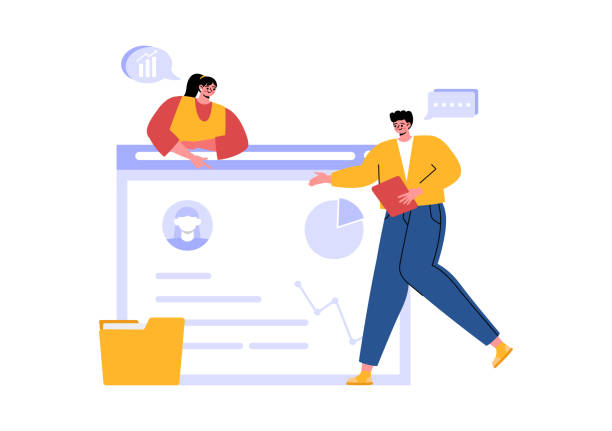Introduction to Multilingual Website Design and Its Importance
In today’s world, where geographical boundaries have largely lost their meaning, access to global markets is vital for any business.
This is where the concept of multilingual website design demonstrates its importance.
A multilingual website allows you to present your content in different languages, thereby attracting a wider audience across the globe.
Today, a significant portion of internet users do not understand the original language of websites and prefer to receive content in their native language.
This not only leads to an improved user experience but also builds stronger trust and connection between the brand and the customer.
#Globalization #GlobalAccess #WiderAudience and #Competitiveness are among the main reasons to consider this strategy.
Google has also highlighted the importance of these websites and provided specific solutions for optimizing them.
Lacking such a capability can mean missing out on countless opportunities in emerging and international markets.
The more a site can interact with users from different cultures and languages, the greater its chance of success on a global scale.
Therefore, investing in multilingual website design is a smart and strategic decision for the future of any business.
How much does losing business leads due to an unprofessional website cost you? Solve this problem forever with professional corporate website design by Rasawp!
✅ Increase credibility and trust of potential customers
✅ Easier attraction of new business leads
⚡ Get a free consultation now!
Benefits of Multilingual Websites for Businesses
Using multilingual websites goes beyond a mere luxury option; it is a strategic necessity for achieving a competitive advantage in the global economy.
One of the biggest advantages is increased access to new markets and expansion of the customer base.
When your website is available in different languages, you can reach audiences who were previously unable to interact with you due to language barriers.
This means new opportunities for marketing and sales.
Also, multilingual websites can significantly improve your SEO ranking.
Search engines like Google recognize multilingual content as a valuable asset, and this can lead to an increase in your international search results ranking, especially if you use hreflang tags correctly.
This capability allows businesses to target specific markets and adapt their content to the cultural and linguistic needs of each region.
Ultimately, multilingual website design not only helps increase sales and revenue but also builds a strong international brand image and attracts the trust of global customers.
This analytical approach shows how, with the right investment in this area, one can surpass competitors and establish their position in the global arena.
Challenges and Key Considerations in Implementing Multilingual Website Design
Although the benefits of multilingual website design are countless, its implementation also comes with challenges that require precise and specialized planning.
One of the biggest challenges is accurate and high-quality content translation.
Simply translating word-for-word is not enough; content must also be culturally localized to resonate with target audiences in each region.
This includes attention to idioms, connotations, and even colors and images.
Another challenge is the technical structure of the website.
Choosing between subdomains, subdirectories, or URL parameters for each language is a key decision that affects the site’s SEO.
Also, managing and updating content in multiple languages can be complex and time-consuming, especially if a suitable Content Management System (CMS) is not used.
Quality control of translations, maintaining visual and technical consistency across all versions, and ensuring the correct functioning of links and interactive elements in each language are all factors that must be carefully considered.
For success in a multilingual web structure, a team of specialists in translation, web development, and SEO must collaborate to prevent potential problems.
| Method | Example | Advantages | Disadvantages |
|---|---|---|---|
| Subdirectory | example.com/fa/page |
SEO-friendly, easier maintenance, receives full main domain authority. | Requires strong infrastructure for language management. |
| Subdomain | fa.example.com |
Can be hosted on different servers, easy to manage language separation. | May not fully transfer main domain authority, slightly more difficult SEO optimization. |
| Separate Domain | example.fr |
Strong SEO for specific countries, fully localized. | High cost, requires separate maintenance and SEO for each domain. |
| URL Parameter | example.com?lang=fa |
Simplest implementation technically. | Least recommended for SEO, may not be correctly indexed by search engines. |
Choosing the Best Strategy for Multilingual URL Structure and SEO
Choosing the right URL structure is one of the most important decisions in the multilingual website design process, directly impacting SEO and how your site is indexed by search engines.
Three main options include subdirectories (e.g., example.com/fr/), subdomains (e.g., fr.example.com), and separate domains (e.g., example.fr).
Each of these methods has its own advantages and disadvantages.
Subdirectories are generally the preferred option for most websites due to their ease of management and strong transfer of main domain authority.
Google also prefers this structure because all SEO signals are attributed to a single main domain.
On the other hand, subdomains offer more flexibility in hosting but can be slightly more challenging from an SEO perspective.
Separate domains are suitable for very large brands with a strong physical presence in each country, but their maintenance cost and complexity are high.
Regardless of the chosen structure, correct use of hreflang tags is essential to inform search engines about different language versions of a page.
These tags help display the correct content to users searching in a specific language and prevent duplicate content issues.
Choosing the right strategy is one of the most important steps in ensuring the success of a website with multilingual website design.
Does your current corporate website not reflect your brand’s credibility and power as it should? Rasawp solves this challenge for you with professional corporate website design.
✅ Increase visitor credibility and trust
✅ Targeted attraction of more customers
⚡ Click to receive a free consultation!
Content and Translation Management in a Multilingual System
Content management on a multilingual website goes beyond mere text translation; this process includes localization, continuous updates, and ensuring brand consistency across all languages.
One of the first steps is choosing a Content Management System (CMS) that supports strong multilingual capabilities.
Popular CMSs like WordPress with plugins such as WPML or Polylang, or enterprise systems like Drupal and AEM, offer solutions for easy multilingual content management.
It is important that translations are performed by professional and native translators who are not only fluent in the target language but also fully familiar with the culture and specific idioms of that region.
Using machine translation tools (like Google Translate) without human review can lead to inaccurate translations and even damage brand reputation.
Furthermore, there must be a defined process for updating content across all languages; any changes to the original content should be quickly applied to the translated versions as well.
Maintaining the quality and integrity of content across all languages is an ongoing challenge that requires meticulous monitoring and planning.
Proper content management on a website with multilingual website design is key to providing a seamless and effective experience for global users.
Click here to preview your posts with PRO themes ››
User Experience and Interface Design in Multilingual Websites
User Experience (UX) and User Interface (UI) design become doubly important on a multilingual website because they must cover the cultural and linguistic needs of a wide range of users.
The design should allow users to easily select their desired language, typically using a clear and accessible language selector (such as country flags or language names).
Another important point is attention to Localization, which goes beyond mere translation.
This includes adjusting date and time formats, currency units, addresses, and even text direction (such as right-to-left for languages like Persian or Arabic and left-to-right for English).
Images and icons must also be culturally appropriate and convey the correct message.
Failure to pay attention to these details can lead to user confusion and reduced trust.
Site loading speed is also important in all language versions; international users expect high speed.
Ensuring that fonts and styles are displayed correctly in all languages, especially for languages with special characters, is essential.
A successful multilingual website design is one that makes users feel comfortable and familiar, regardless of their language or culture.
This approach guides how to provide an exceptional user experience by paying attention to visual and functional details.
Optimizing Local and Global SEO for a Multilingual Website
SEO optimization for a multilingual website is a complex but vital process that requires simultaneous local and global strategies.
For global SEO, as previously mentioned, correct use of hreflang tags is essential to inform search engines about different language versions of a page.
These tags prevent duplicate content issues and help Google display the correct version of the page to users based on their language and geographical region.
Additionally, keyword research for each language should be conducted separately, taking into account cultural and local differences.
Keywords that are effective in one language may not be effective or may have a different meaning in another.
For local SEO, Google My Business (for each geographical location) and local directories should be utilized.
Contact information and addresses must be localized and accurate for each region.
Building external links (backlinks) from reputable and relevant websites in each geographical region also helps increase site authority and ranking.
Monitoring SEO performance with tools like Google Search Console and Google Analytics for each language version allows you to continuously optimize your strategies and ensure the success of your multilingual site.
This continuous optimization is essential for any multilingual website design.
Click here to preview your posts with PRO themes ››
| SEO Element | Description | Why it’s important? |
|---|---|---|
| Hreflang Tag | Tells search engines which version of a page is suitable for a specific language/region. | Prevents duplicate content, displays the correct version to users. |
| Local Keyword Research | Identifying relevant and highly searched keywords in each language/region. | Attracts targeted traffic, matches local user needs. |
| Content Localization | Translating content considering cultural differences and local idioms. | Increases conversion rate, improves user experience and trust. |
| Google My Business Profile | Optimizing business information on Google for local searches. | Increases visibility in local searches and Google Maps. |
| Local Backlinks | Obtaining links from reputable websites in the target geographical region. | Increases domain authority and ranking in local search results. |
Popular Tools and Platforms for Multilingual Website Design
For successful multilingual website design implementation, choosing the right tools and platforms is of paramount importance.
Today, many Content Management Systems (CMS) support multilingual capabilities or can acquire this functionality through plugins and modules.
WordPress, as the most popular CMS, provides the ability to create and manage multilingual content with plugins like WPML (WordPress Multilingual Plugin) and Polylang.
WPML is a comprehensive solution that allows you to easily translate posts, pages, categories, and even themes.
Joomla and Drupal are also powerful CMSs that offer built-in multilingual capabilities or through modules, and are more suitable for larger and more complex projects.
For e-commerce websites, platforms like Shopify also provide multilingual plugins and features to expand online stores into global markets.
In addition to CMSs, Translation Management Systems (TMS) tools such as MemoQ or Trados are also very useful for managing large volumes of translations and ensuring content quality and consistency.
These tools offer features like Translation Memory and Terminology Database, which make the translation process faster and more accurate.
The correct selection of these tools is a key step towards success for any multilingual website design.
Are you dissatisfied with the low conversion rate of visitors to customers on your e-commerce site?
With professional e-commerce website design by Rasawp, solve this problem forever!
✅ Increase visitor-to-customer conversion rate
✅ Create an excellent user experience and build customer trust
⚡ Get a free consultation
How to Measure the Success of a Multilingual Website?
After implementing multilingual website design, evaluating its success is essential to ensure business goals and Return on Investment (ROI) are met.
For this purpose, Web Analytics tools like Google Analytics can be used.
Key metrics to monitor include: website traffic by language and geographical region.
This data shows which language versions attract the most visitors.
Bounce Rate and User Time on Site for each language also indicate the quality and relevance of the content to that language’s audience.
A high bounce rate or low time on site can indicate a need to improve translations, content localization, or user experience.
Conversion Rate for each language shows the site’s success in converting visitors into customers or performing desired actions (such as filling out a form, purchasing a product).
Monitoring keyword rankings in different search engines for each language is also highly important.
Tools like Google Search Console help you identify and resolve SEO issues and site performance in search results.
Direct feedback from users (through surveys or contact forms) can also provide valuable information regarding their satisfaction with multilingual content.
This analytical approach helps you continuously improve your multilingual website design strategy and ensure your site serves your global audience in the best possible way.
The Future of Multilingual Website Design and New Trends
The future of multilingual website design is intertwined with technological advancements and changes in internet user behavior.
One of the most important future trends is the wider use of Artificial Intelligence (AI) and Machine Learning in translation and localization.
Machine translation tools are making significant progress and will soon be able to provide translations nearly as good as human translation, which can make the localization process faster and more cost-effective, though human oversight will remain crucial.
Voice Search and Smart Assistants also enhance the importance of multilingual content.
Users are increasingly asking questions in their native language and vocally through smart assistants, and websites must be able to respond to this need.
Augmented Reality (AR) and Virtual Reality (VR) may also play a significant role in how users interact with multilingual content, requiring innovative approaches to user interface localization.
Content personalization based on language, region, and even user behavior is another emerging trend that can significantly improve the user experience.
Given these changes, businesses must be prepared to continuously update their multilingual website strategies to stay ahead in global competition.
These news and entertaining trends show how multilingual website design is constantly evolving and creating new opportunities for interacting with global audiences.
Click here to preview your posts with PRO themes ››
Frequently Asked Questions
| Question | Answer |
|---|---|
| What is a multilingual website? | It is a website whose content is available to users in multiple different languages. |
| Why should we design a multilingual website? | To expand access to international audiences, increase website traffic, improve SEO in target markets, and provide a better user experience for non-Persian speaking users. |
| What are the main methods for implementing a multilingual website? | Using subdomains (e.g., en.mysite.com), using subdirectories (e.g., mysite.com/en/), and using separate domains for each language (e.g., mysite.com and mysite.de). |
| Which implementation method is better for SEO? | Generally, using subdirectories (language folders) is often recommended due to the transfer of the main domain’s authority to other languages. |
| What is the Hreflang tag and what is its use? | It is an HTML tag or HTTP Header that informs search engines which version of a page is suitable for which language or geographical region. This tag prevents Duplicate Content and improves SEO. |
| How is a Language Switcher designed? | Usually by using a dropdown menu, button, or flag in the site’s header or footer, which allows the user to select their preferred language. |
| Is automatic (machine) translation suitable for a multilingual site? | No, machine translation usually has low quality and many errors that can harm the site’s credibility. Human translation or a combination of human translation and machine editing is recommended. |
| What are the most important SEO tips in multilingual website design? | Correct use of Hreflang tags, having an appropriate URL structure for each language, translating titles and meta descriptions, translating main content, and internal linking between related language versions. |
| Should all website content be translated? | It depends on the strategy. Usually, the main and important content of the site should be translated. Less important sections or blogs may not require full translation. |
| What are the main challenges in multilingual website design? | Content management in different languages, translation costs, technical issues related to URLs and language tags, template compatibility with right-to-left (RTL) languages like Persian and Arabic, and managing multilingual SEO. |
And other services of Rasa Web Advertising Agency in the field of advertising
Smart Direct Marketing: A specialized service for growth in campaign management based on intelligent data analysis.
Smart SEO: A combination of creativity and technology for online growth through Google advertising management.
Smart Reportage: A fast and efficient solution for campaign management with a focus on custom programming.
Smart Sales Automation: A combination of creativity and technology to improve SEO ranking through SEO-driven content strategy.
Smart UI/UX: A fast and efficient solution for customer attraction with a focus on attractive user interface design.
And over hundreds of other services in the field of internet advertising, advertising consultation, and organizational solutions
Internet Advertising | Advertising Strategy | Advertorial
Resources
Benefits of Multilingual Website DesignGlobal Business StrategiesSEO for Multilingual SitesEntering International Markets
? Rasaweb Afarin, your smart companion in the digital world, elevates your business with services such as responsive website design and SEO optimization.
📍 Tehran, Mirdamad Street, next to Bank Markazi, Kazeroon Jonoubi Alley, Ramin Alley, No. 6


